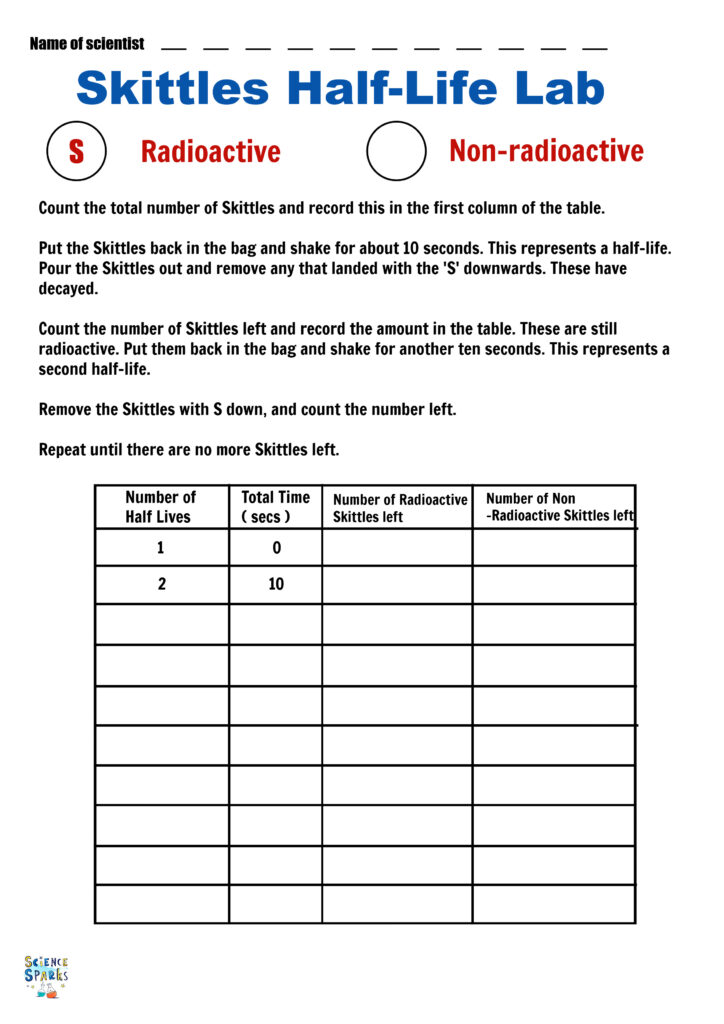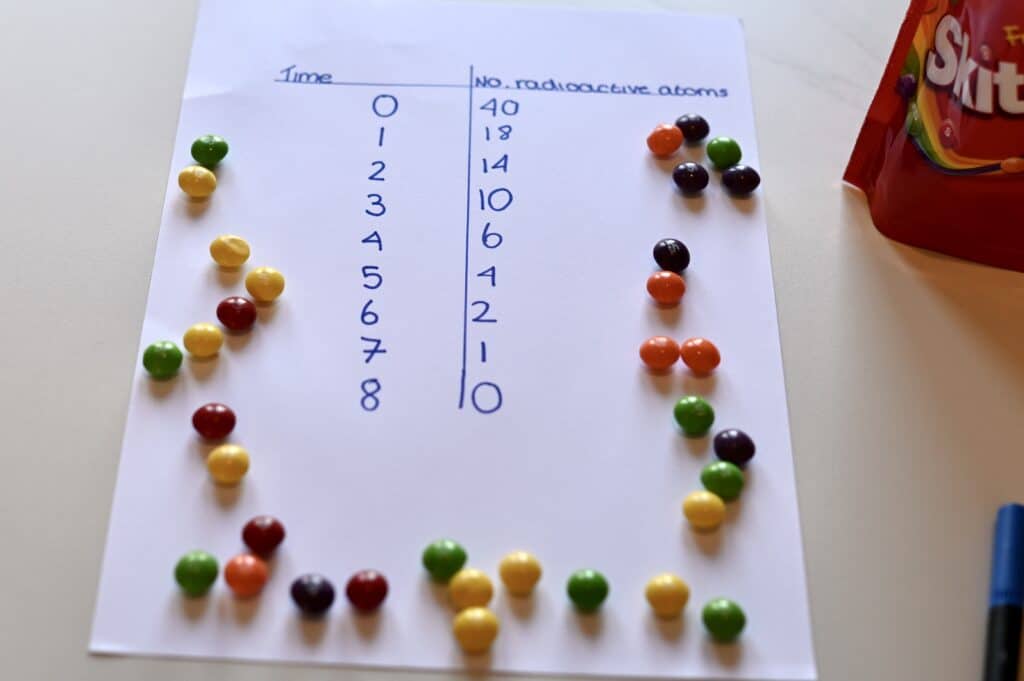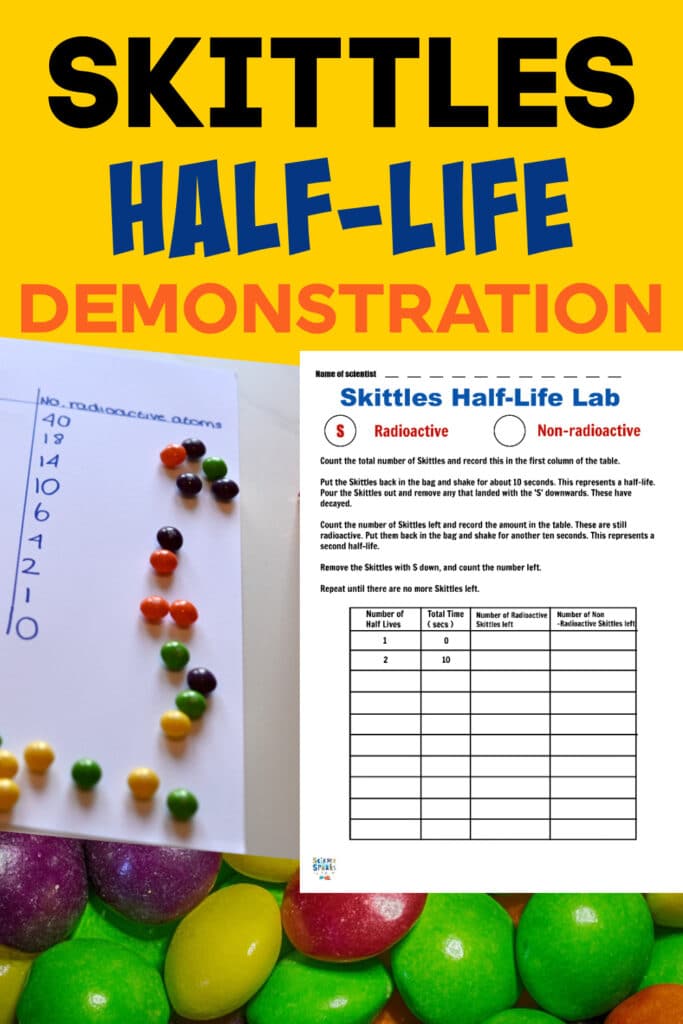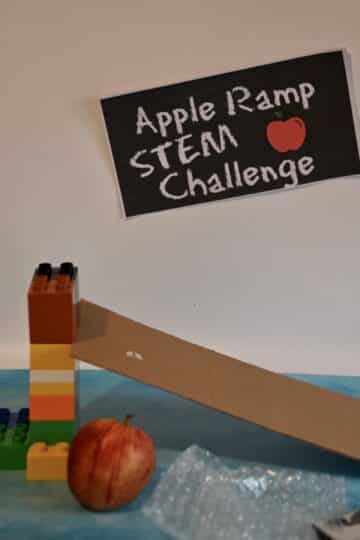This activity uses Skittles to demonstrate radioactive decay. The rate of decay depends on the isotope of the element and is referred to as the half-life. Radioactive decay is a random process.
To understand the concept of a half-life, we're going to pretend Skittles are radioactive atoms. Skittles that land with the S upwards are radioactive, and those that land with the S down are decayed and are no longer radioactive.

Skittles Half-Life Demonstration
You'll need
Skittles
Pen and Paper
Instructions
Count the total number of Skittles and record this in the first column of the table.
Put the Skittles back in the bag and shake it for about 10 seconds. This represents a half-life. Pour the Skittles out and remove any that landed with the 'S' downwards. These have decayed.
Count the number of Skittles left and record the amount in the table. These are still radioactive. Put them back in the bag and shake for another ten seconds. This represents a second half-life.
Remove the Skittles with S down, and count the number left.
Repeat until there are no more Skittles left.

Radiation and Activity - Key points
Radioactive sources contain radioactive isotopes that release radiation from the nuclei of their atoms.
The radioactivity of a source decreases over time. This can be a few hours or millions of years, depending on the isotope.
Radioactivity is a random process. You can't predict which unstable nuclei in a sample of radioactive material will decay next.
In a sample with lots of nuclei, scientists can predict how many will decay in a given time based on the half-life of the source material.
The rate at which a source decays is called its activity.
Activity is measured in becquerels, Bq. 1 Bq is 1 decay per second.
Radioactive activity is measured with a Geiger-Müller tube, which clicks every time it detects radiation.
Half-Life
Half-life is the average time taken for the number of radioactive nuclei of an isotope to halve.
What does a short half-life mean?
A short half-life means the activity drops quickly as the nuclei are very unstable and decay rapidly.
Radioactive sources with a short half-life are dangerous as they emit a high amount of radiation at the beginning but quickly become safe.
What does a long half-life mean?
A long half-life means radioactive activity falls slowly. The source releases small amounts of radiation over a long period of time.

Last Updated on March 21, 2025 by Emma Vanstone




Leave a Reply